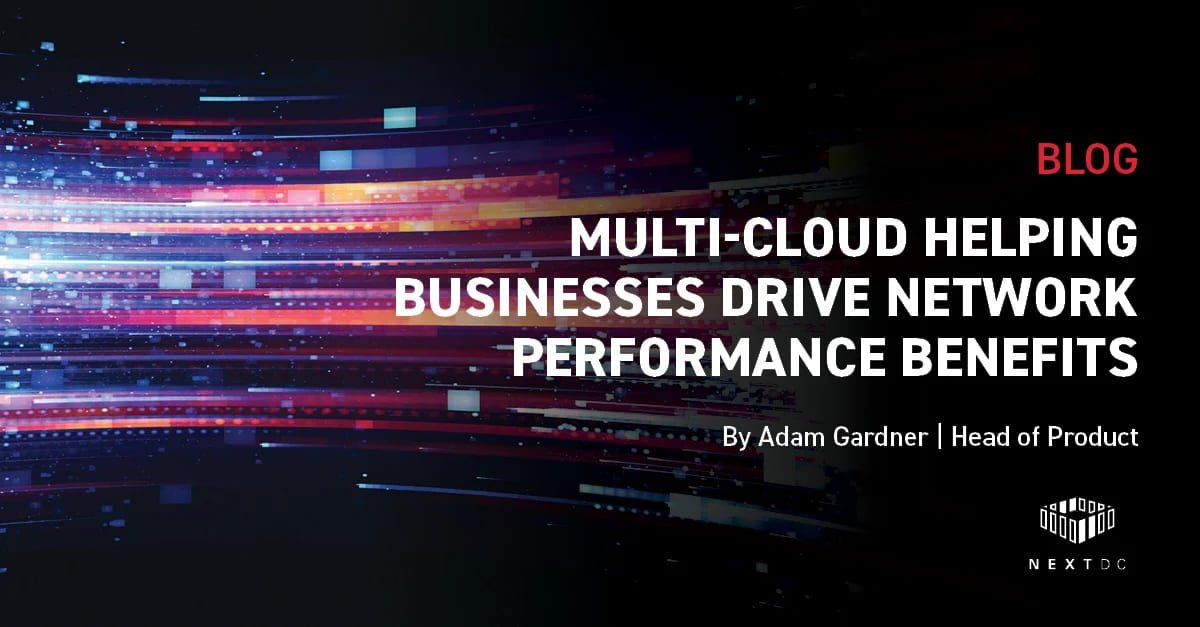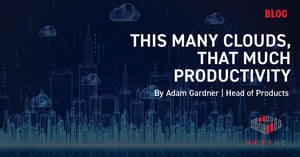By Steve Martin Head of Channels and Inside Sales at NEXTDC
Anyone old enough to remember the Monty Python movie the Life of Brian will recall the joke about the resistance fighters splitting into different warring factions. Sometimes, talking about the cloud feels like a never-ending version of that gag.
Because once organisations started moving to the cloud, it quickly became clear there was no such thing as “the” cloud, but many clouds. This led to the heated debates of the last five or so years - which cloud is best? Do you go in-house versus cloud, or public versus private cloud. These debates were quickly settled with the realisation that, of course, we need them all. Then the focus switched to hybrid cloud.
But hybrid doesn’t solve our problems either. There is just as many iterations of cloud inside a public or private cloud as there are business problems to be solved. Which is why the emergence of the term “multi-cloud” in recent years is a significant step forward in the way we think about cloud, even if there’s still confusion in the market about what it actually means.

Few people in an organisation are invested in where data resides, they just care that the job is getting done effectively. This has resulted in most organisations using a range of clouds, selecting the solutions that best suit their specific needs, resulting in the multi-cloud phenomenon.
Going multi-cloud does not mean going all-in on the cloud According to IDC, by 2020 over 90 per cent of enterprises will use multi-cloud solutions, shifting workloads from their corporate IT environment between multiple cloud providers.
While this solves this issue of using the best tool and getting the best outcome for the requirements, the challenge organisations now face is the complexity of moving data seamlessly in a multi-cloud world. If you’re running on cloud platforms such as Office 365, Azure, AWS, Oracle, IBM Cloud or Google Cloud, access to the data and apps stored on them is not instantaneous, with delays created by the data traveling back and forth between multiple clouds and your own IT, before reaching you or your customer.
This is why Gartner suggests the key to a multi-cloud world is to re-architect your workloads to take advantage of the right clouds for the right tasks. It’s highly feasible these days to run an ecommerce workload leveraging AWS for the customer-facing front end, Azure for back end inventory and customer data, Oracle Cloud for financials, all integrated with components of in-house IT. This is an example of a multi-cloud architecture.
Removing the speedbumps
In a multi-cloud world, the centre of your IT moves from your on-premise data centre to the hyperscale data centre where you can interconnect with multiple clouds via high speed, private connections. Therefore, re-architecting your network becomes critical to maximising performance and customer experience.
Colocation in a hyperscale data centre is becoming a pivotal factor as organisations can’t afford the latency and associated cost of data travelling from their on-premise network between their various clouds. Having all your clouds and your corporate IT in one place immediately eliminates this problem, which is why hosting or connecting to the major cloud platforms will become a critical point of difference in the selection of a data centre.
In addition to the agility multi-cloud provides organisations, and the speed and latency considerations, the third component of the multi-cloud puzzle is security. Adopting multiple clouds and moving data between them creates new security challenges organisations must consider. A data centre that protects them from that added layer of risk can make a huge difference to keeping it all secure and operational.
As different cloud providers fulfil different roles, companies that embrace a true multi-cloud architecture will use that level of diversity to deploy different workloads and tasks with different providers such as Oracle for financial data or AWS for retail services, knowing that they work best for them based on their specific needs. One of the greatest advantages of architecting a multi-cloud environment is the ability for organisations to pick and choose the components of cloud providers that play to their strengths and are the best fit in relation to their needs based on location, latency and costs.
Organisations who don’t rearchitect their IT network to optimise multi-cloud will miss out on the true value it delivers. Not only from a financial standpoint, but they will find themselves missing out on tremendous flexibility and scalability options for their business and fail to maximise growth as their strategy will struggle to evolve in line with the demands of their business and customer expectations
NEXTDC is excited to welcome Google Cloud to our partner ecosystem. Read more to learn about NEXTDC and Google’s new partnership and how you can connect directly to Google Cloud from any NEXTDC data centre nationwide. Learn more about connecting with NEXTDC


